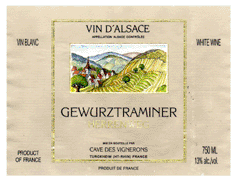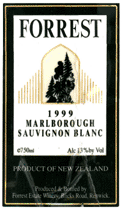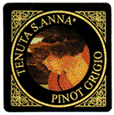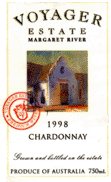![]()
Recent Articles
Archive of National Post Articles
![]()

The
Whites of Winter ~ putting a little spice into your life!
Gewurztraminer from Alsace Classics to Ontario’s
shores
By Michael Vaughan • Weekly Wine & Spirits Columnist
National Post • Saturday, January 6, 2001
It’s always hard to
condense what’s worth buying into a handful of items. Today’s Vintages
release, for instance, consists of 126 new items. And no matter how much I
try, it’s impossible to squeeze every wine worthy of buying into a
single column. Last week I previewed two highlights: the Burgundian-inspired
California classic Landmark 1999 Overlook Chardonnay at $39.95 and Burgundy’s
delicious Rion 1997 Côte des Nuits
Villages (not the 1998 in today’s Catalogue) at only $28.50
which is showing so beautifully.
Accurately assessing
70-plus wines in just a few hours is no mean feat. Add to this the problem
of cork-taint (about 5%) and even the best of palates become fallible.
It’s for this reason that I invest the time to taste each wine twice on
separate occasions – hopefully making my recommendations right on!
Let’s start with a
little something to spice up your life – Gewurztraminer. Now here’s a
grape whose birth is shrouded in the mists of time. The grape Traminer was
first written about almost a thousand years ago. It was grown in the
southern Italian Tyrol in a town bearing the same name. It probably made
its way to the Pfalz region of southern Germany via the Romans.
There are many
versions of Traminer all with different degrees of spiciness. It was the
pink-skinned Traminer Musqué “perfumed” in French or spicy “gewürz”
in German that eventually immigrated to Alsace in 1871. In fact, up until
1973 both the yellow skinned Traminer along with the spicier
Gewurztraminer were produced in Alsace. Today, only the latter is allowed
and at its best it produces magnificently spicy, floral wines varying from
dry to sweet.
Now not everyone is
keen on this grape’s deceptively sweet aromatics, which often smell of
rose petals and/or lychee. In its dry or off-dry incantation, it’s
perfect with appetizers, Thai cuisine or simply sipping. When it’s
sweeter (as in the case of a vendage tardive or late harvest), it might substitute French
Sauternes with foie gras. Making the latter is very tricky but rewarding.
This very late ripening variety develops most of its character in the fall
and under warm sunny conditions can suddenly explode with sugar causing
the wine’s acidity to drop through the floor. Next to Pinot Noir,
Gewurztraminer is probably one of most difficult wine grapes to grow.
 Today’s Vintages
release features a delightful example of the former, which is just
slightly off-dry. The Turckheim
Cave des Vignerons 1998 Gewurztraminer Herrenweg has a light golden
colour suggesting its maturity. At $18.65 it offers fine, ready-to-enjoy
value with its lingering, spicy, lychee fruit flavours. Key to its
enjoyment is the right food marriage – Thai would be fine but an
Alsatian onion tart would be divine. What I especially like about this
variety is the subtle hint of refreshing bitterness on its dry finish.
Today’s Vintages
release features a delightful example of the former, which is just
slightly off-dry. The Turckheim
Cave des Vignerons 1998 Gewurztraminer Herrenweg has a light golden
colour suggesting its maturity. At $18.65 it offers fine, ready-to-enjoy
value with its lingering, spicy, lychee fruit flavours. Key to its
enjoyment is the right food marriage – Thai would be fine but an
Alsatian onion tart would be divine. What I especially like about this
variety is the subtle hint of refreshing bitterness on its dry finish.
Also on today’s
release are two Ontario versions of this French classic. My favourite is Cave Spring 1998 Gewurztraminer a VQA from the Beamsville Bench
region at $11.95. It offers light, crisp, gently spicy, lychee flavours,
which seem to be well tuned to those palates not acclimatized to the
varietal’s more intense idiosyncratic flavours. While the first sample
with subdued citrus was slightly off, the second was just fine.
Others might take a
feather from Cave Spring’s hat. A wine’s quality will generally vary
inversely with the grape yield. In the case of the hot 1998, yield was up
some 50% over the cooler miniscule 1997 crop. More wine from same number
of vines meant less intensity of flavour and structure. As a result, Cave
Spring intelligently reduced the price of the 1998 from $17.95 to $11.95.
This means that those expecting something as intense as the 1997 will not
be disappointed with what’s in the bottle.
From Germany we have
yet another rendition of Mr. Spice, this time from the Cooperative Vier
Jahreszeiten in the Pfalz. Well priced at $14.50, 1998
Dürkheimer Feuerberg Gewürztraminer Kabinett has a slightly sweet,
spicy, pear purée taste. It originally appeared in Vintages last April at
which time it was literally loaded with fresh lychee. It tastes
considerably more mature today and is perhaps just past its peak, so drink
up.
 Moving on to other
best buy whites, don’t miss Forrest
1999 Marlborough Sauvignon Blanc ($17.85) which is incorrectly
identified as the 1998 vintage in the LCBO Catalogue (along with the wrong
Wine Spectator tasting note and score). This is a very classy effort for
the money with tangy, bright, grassy, white grapefruit flavours with a
long, dry, refreshing finish.
Moving on to other
best buy whites, don’t miss Forrest
1999 Marlborough Sauvignon Blanc ($17.85) which is incorrectly
identified as the 1998 vintage in the LCBO Catalogue (along with the wrong
Wine Spectator tasting note and score). This is a very classy effort for
the money with tangy, bright, grassy, white grapefruit flavours with a
long, dry, refreshing finish.
 Also from New Zealand
is the surprisingly decent Framingham
1999 Pinot Gris at $14.55. This versatile, well-balanced, crowd
pleaser has just off-dry, honeyed, ripe Anjou pear flavours. It would be
fun to compare it to the shy but nicely balanced, bright, citrusy Tenuta
S. Anna 1999 Pinot Grigio from Italy’s Friuli at $15.95 (halves at
$8.85).
Also from New Zealand
is the surprisingly decent Framingham
1999 Pinot Gris at $14.55. This versatile, well-balanced, crowd
pleaser has just off-dry, honeyed, ripe Anjou pear flavours. It would be
fun to compare it to the shy but nicely balanced, bright, citrusy Tenuta
S. Anna 1999 Pinot Grigio from Italy’s Friuli at $15.95 (halves at
$8.85).
From South
Africa there’s an unusual but tasty little ditty McGregor
2000 Colombard/Chardonnay with its rather pleasant, orange citrus and
fresh red apple flavours. At $9.55 it’s a versatile, easy-to-quaff, best
buy.
 Finally, for
Chard fans there is a bit of a sleeper that needs time to come around. The
youthful Voyager 1998 Chardonnay from
the Margaret River of Western Australia
at $23.75 has lots of buttered scone flavours with cedar and lemon
meringue pie notes. And talking about pies, coconut cream lovers might dig
into the rather forward, intense, cedary Carmen
1997 Chardonnay Reserve from Chile’s Maipo Valley at only $12.80.
For those preferring butterscotch, buttered toast and key lime pie,
there’s Estancia 1998 Pinnacles
Chardonnay from California’s Monterey at $19.95 - obviously a pie
for almost every taste.
Finally, for
Chard fans there is a bit of a sleeper that needs time to come around. The
youthful Voyager 1998 Chardonnay from
the Margaret River of Western Australia
at $23.75 has lots of buttered scone flavours with cedar and lemon
meringue pie notes. And talking about pies, coconut cream lovers might dig
into the rather forward, intense, cedary Carmen
1997 Chardonnay Reserve from Chile’s Maipo Valley at only $12.80.
For those preferring butterscotch, buttered toast and key lime pie,
there’s Estancia 1998 Pinnacles
Chardonnay from California’s Monterey at $19.95 - obviously a pie
for almost every taste.
Copyright
Food & Beverage Testing Institute of Canada 2004
Prior written permission is required for any form of reproduction
(electronic or other wise) and or quotation.
Contact Michael Vaughan at
mbv@total.net